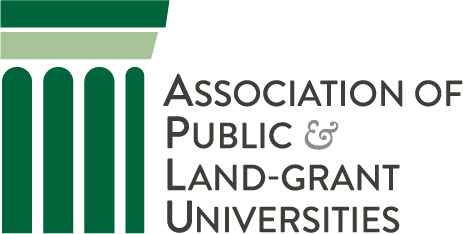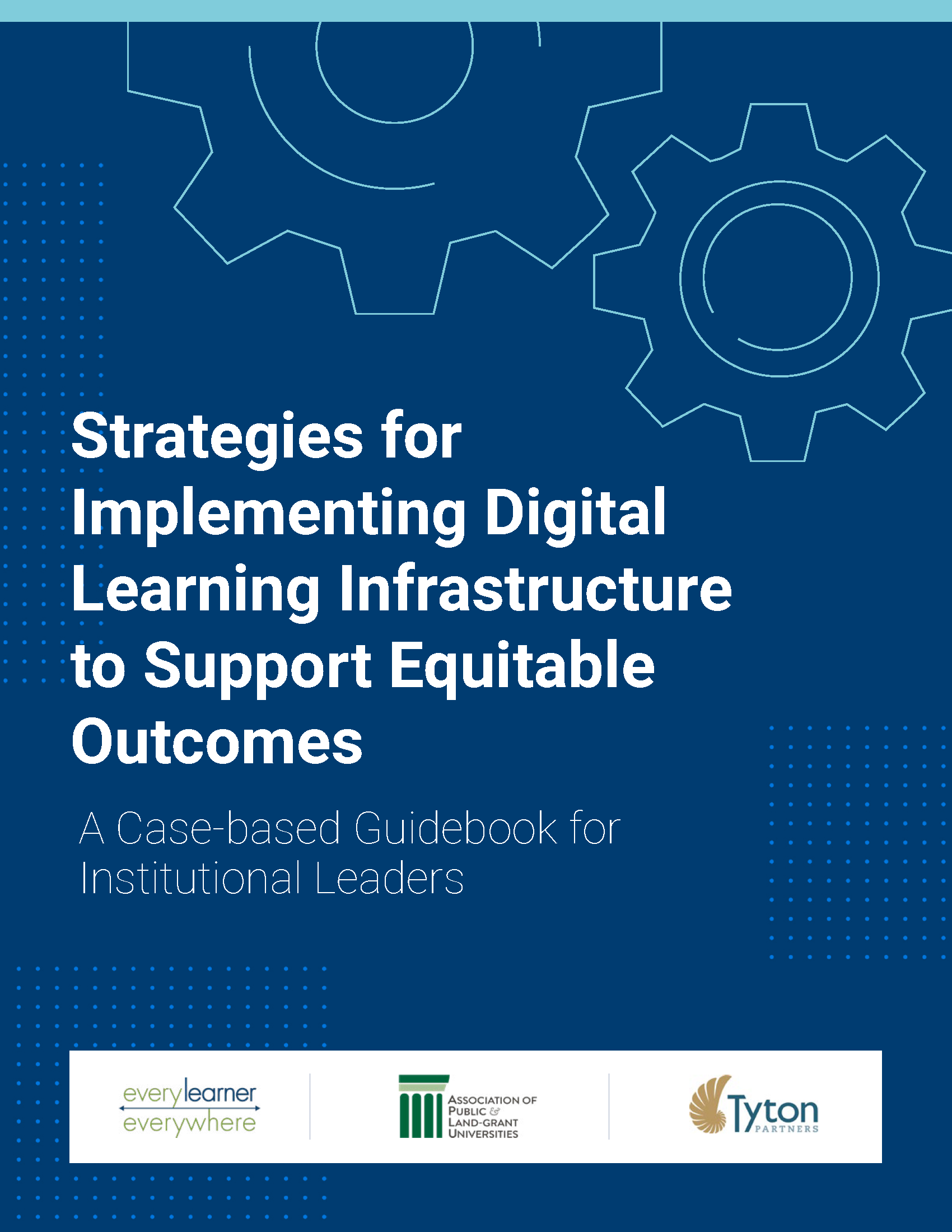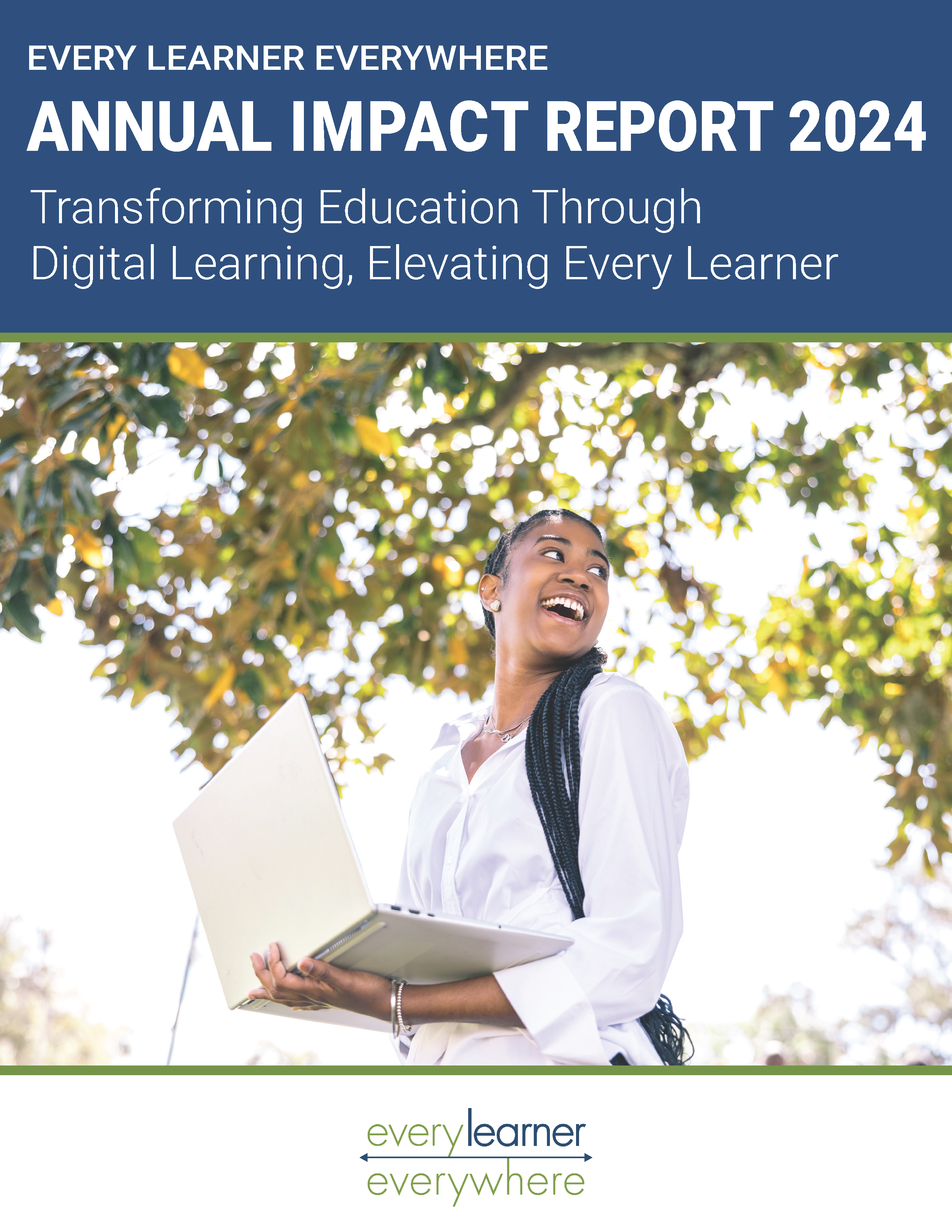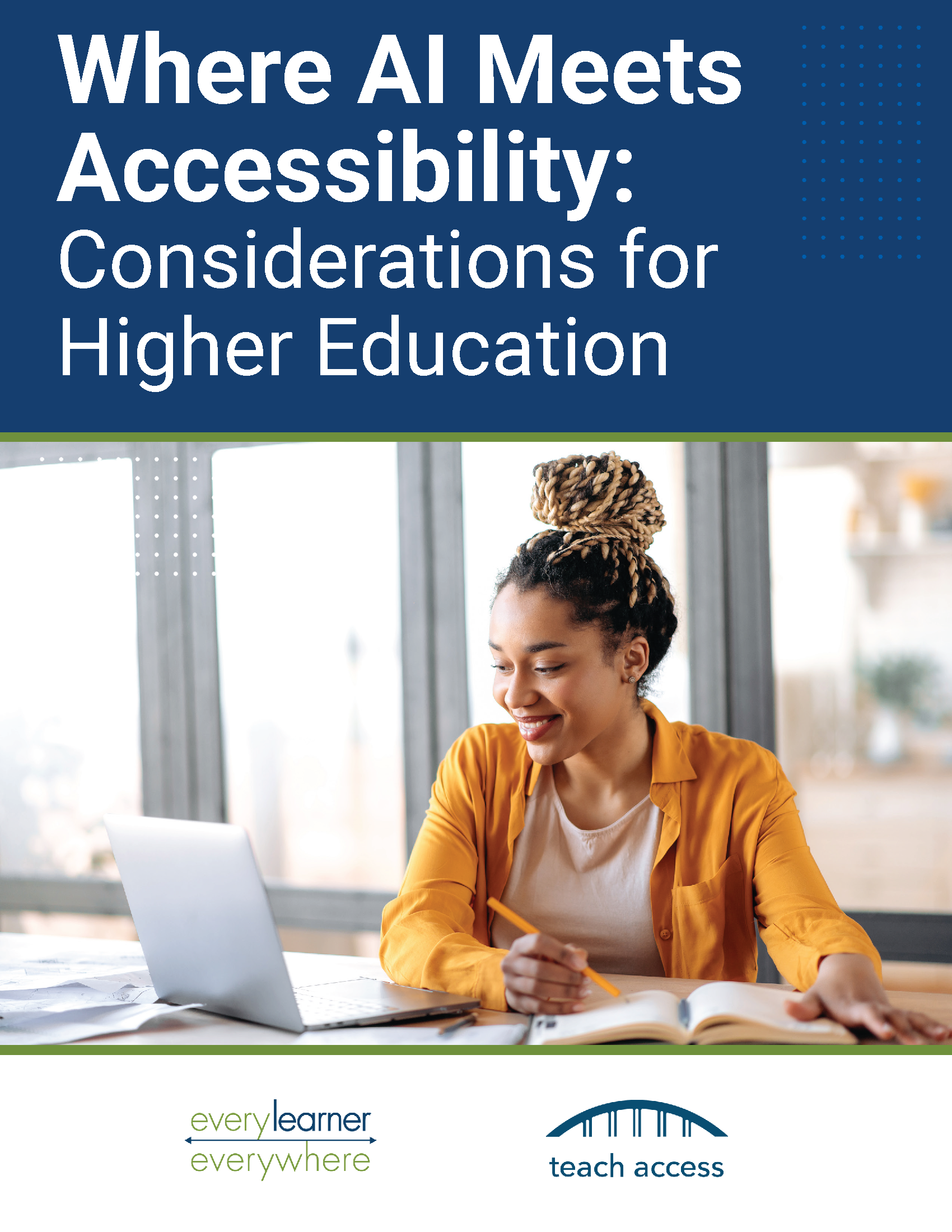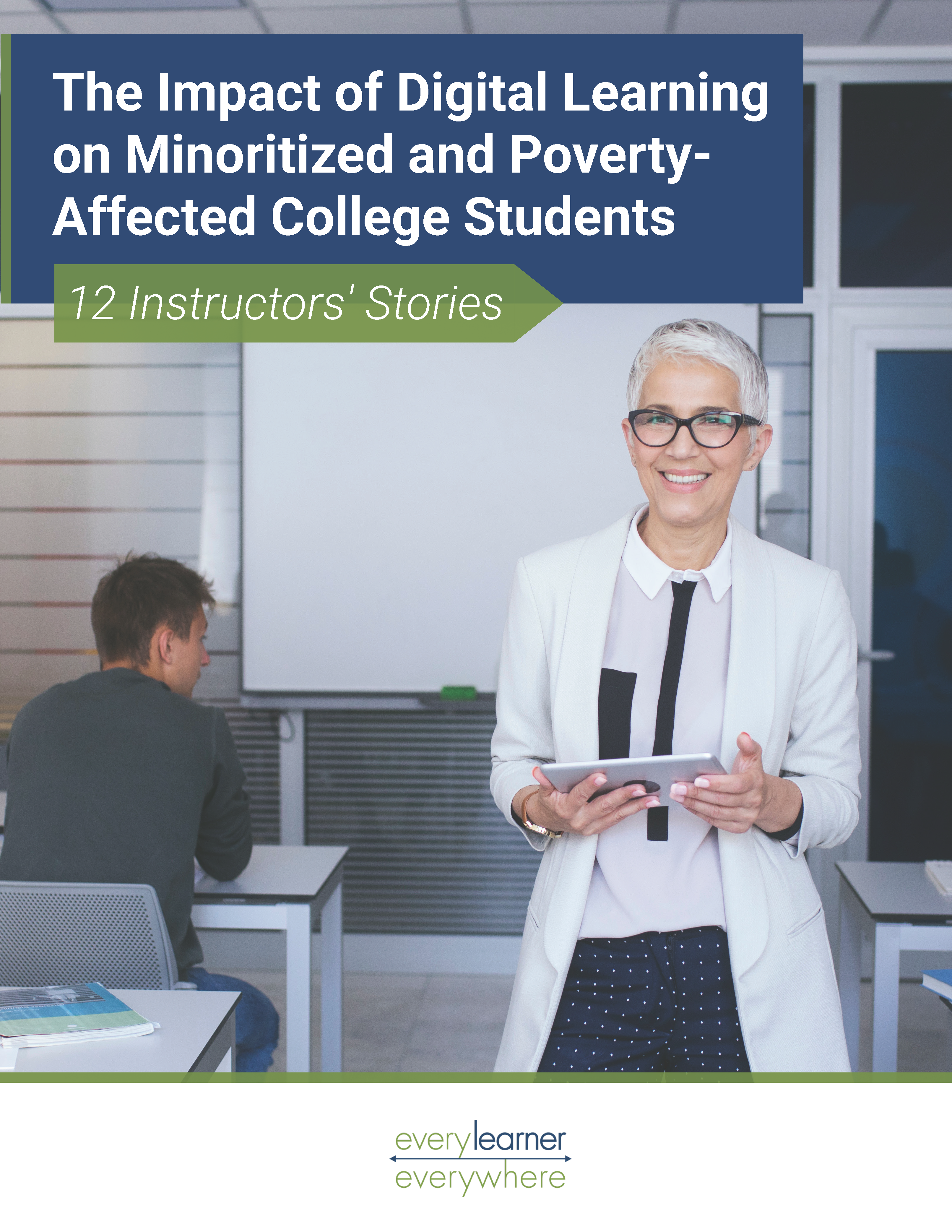Today’s higher education system produces persistent gaps in student outcomes for Black, Latino, Indigenous, and other historically minoritized and low-income students. When outcomes data are reviewed by race and income, the gaps are stark. Minoritized students are less likely to attend a postsecondary (two- or four-year) institution, and those who do are less likely to persist and graduate. Whereas 66% of white students graduate in six years or less from a four-year institution, only 42% of Black students and 57% of Latinx students do the same. The trend is similar for two-year institutions.
When implemented well, digital learning demonstrates the power to close equity gaps in these gateway courses and throughout the curriculum. Leveraging digital learning components, such as interactive and individualized course materials, leadership, and faculty across institutions opens the door to creative, effective strategies for improving student outcomes in gateway courses. With the adoption of adaptive courseware and accompanying data analysis, several colleges and universities reveal that digital learning is a promising tool for improving student success — and ultimately closing equity gaps — in high-enrollment, introductory courses. While we continue to learn about the potential of digital tools to enhance teaching and improve student outcomes, many institutions already effectively leverage digital technologies to support faculty in the redesign of critical, gateway courses.
The successes (and challenges) of the organizations profiled in this report yield six overall key recommendations for institutional leaders seeking to invest in digital learning infrastructure that is focused on serving minoritized students and supports the adoption of high-quality digital learning and pedagogy, particularly in the early undergraduate student experience. This document outlines specific recommendations and examples across each of the elements of digital learning infrastructure. This report focuses on building the core infrastructure needed for high-quality digital learning and is designed primarily for a mid- to senior-level academic administrators including department chairs, leaders of centers of teaching and learning, technology leaders, and academic leadership.
Download Strategies for Implementing Digital Learning Infrastructure to Support Equitable Outcomes

